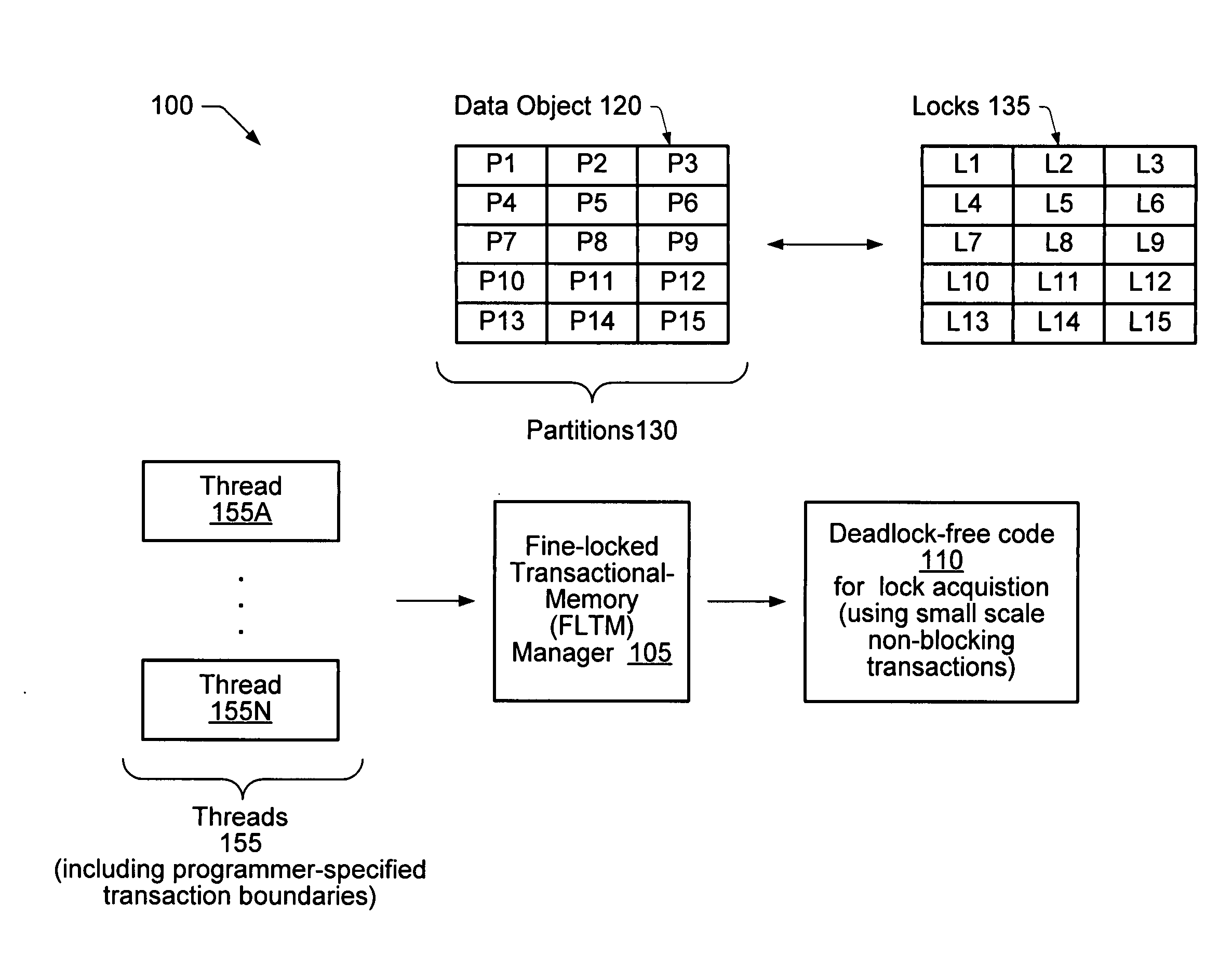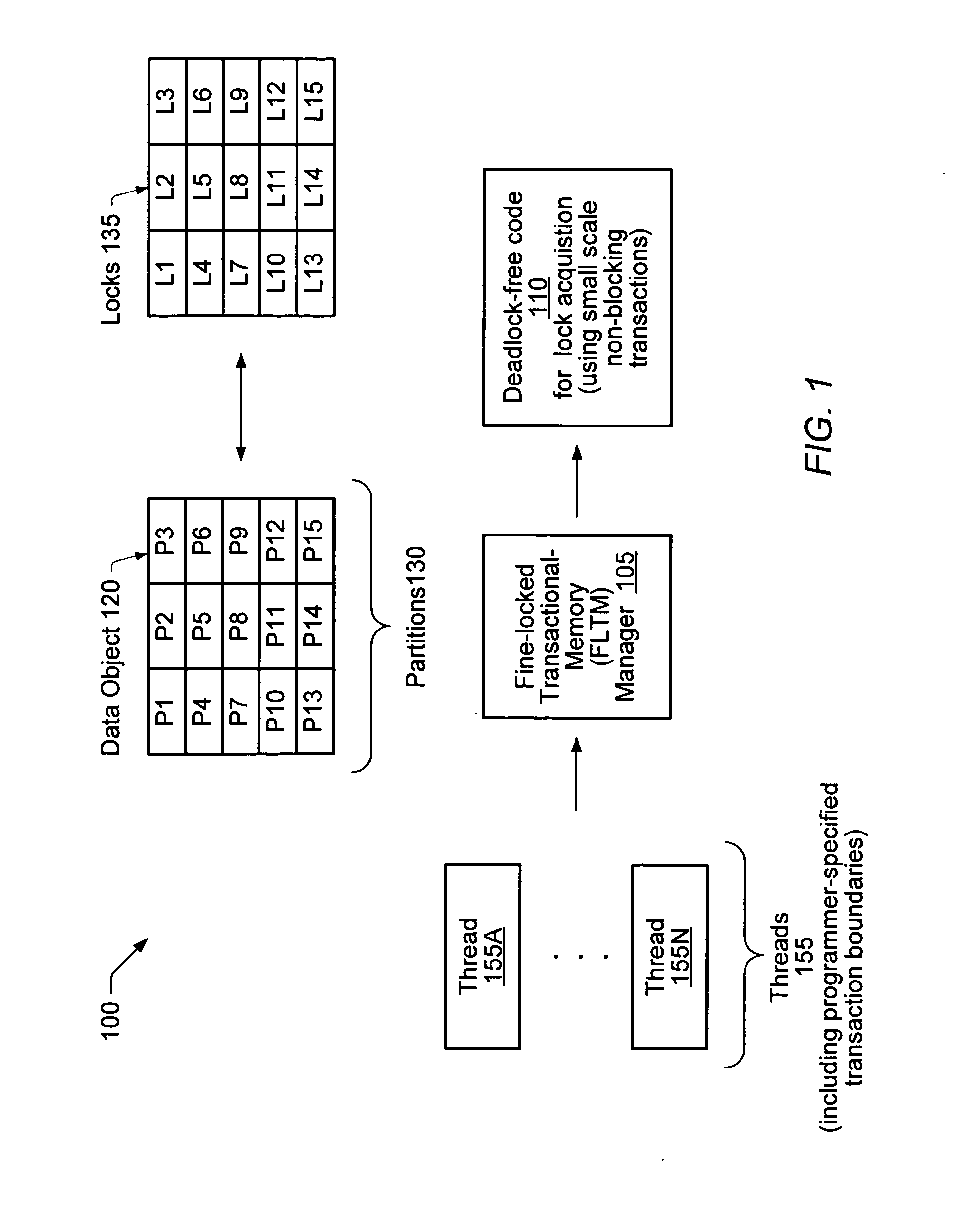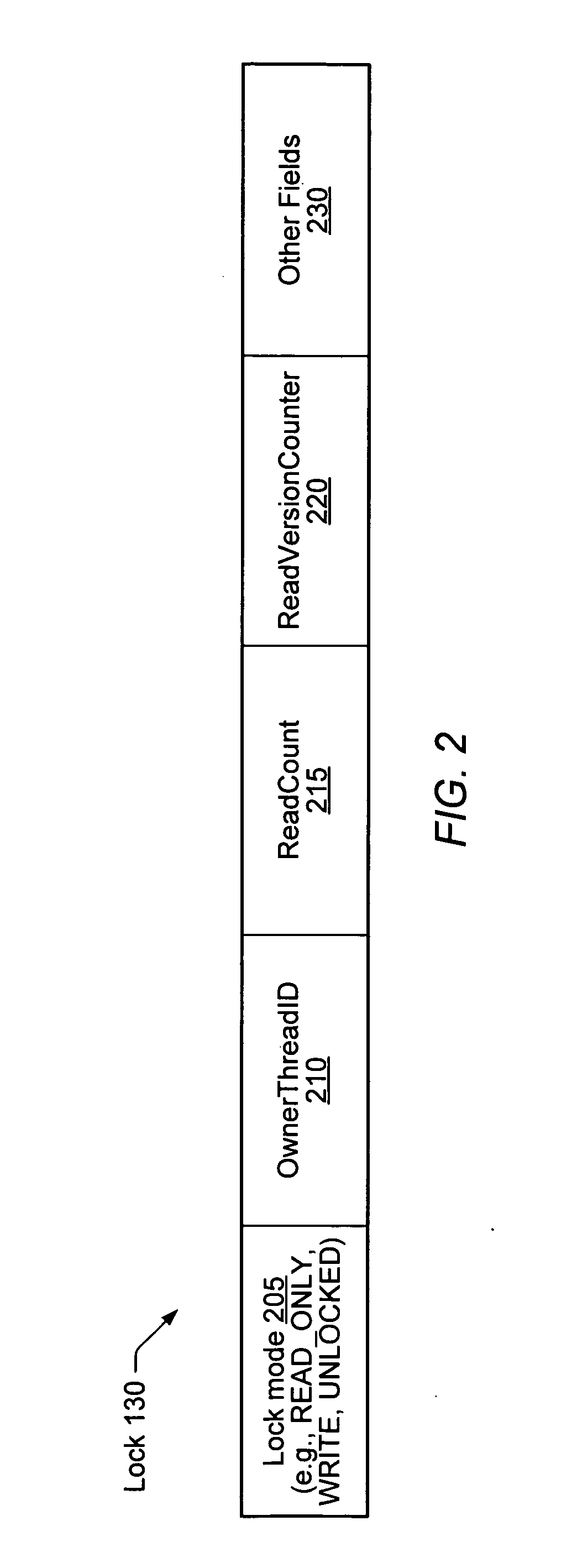Fine-locked transactional memory
- Summary
- Abstract
- Description
- Claims
- Application Information
AI Technical Summary
Benefits of technology
Problems solved by technology
Method used
Image
Examples
Embodiment Construction
[0018]FIG. 1 is a block diagram illustrating one embodiment of a system 100. The system includes a plurality of threads 155 (e.g., threads 155A-155N) and a fine-locked transactional-memory (FLTM) manager 105 configured to coordinate concurrent accesses from the threads 155 to a shared data object 120. One or more of the thread 155 may include programmer-specified transaction boundaries (e.g., “TransactionStart” indicating the start of a transaction and “TransactionCommit” indicating the end of a transaction) identifying sequences of operations that are to be performed atomically. The programmer-specified transactions may be arbitrarily long, e.g., in embodiments where the underlying hardware includes a special transactional cache for hardware transactional-memory (HTM) operations, the number of memory access operations within a given programmer-specified transaction may in some cases exceed the transaction size limits imposed by the transactional cache. The data object 120 may be lo...
PUM
 Login to View More
Login to View More Abstract
Description
Claims
Application Information
 Login to View More
Login to View More - R&D
- Intellectual Property
- Life Sciences
- Materials
- Tech Scout
- Unparalleled Data Quality
- Higher Quality Content
- 60% Fewer Hallucinations
Browse by: Latest US Patents, China's latest patents, Technical Efficacy Thesaurus, Application Domain, Technology Topic, Popular Technical Reports.
© 2025 PatSnap. All rights reserved.Legal|Privacy policy|Modern Slavery Act Transparency Statement|Sitemap|About US| Contact US: help@patsnap.com



